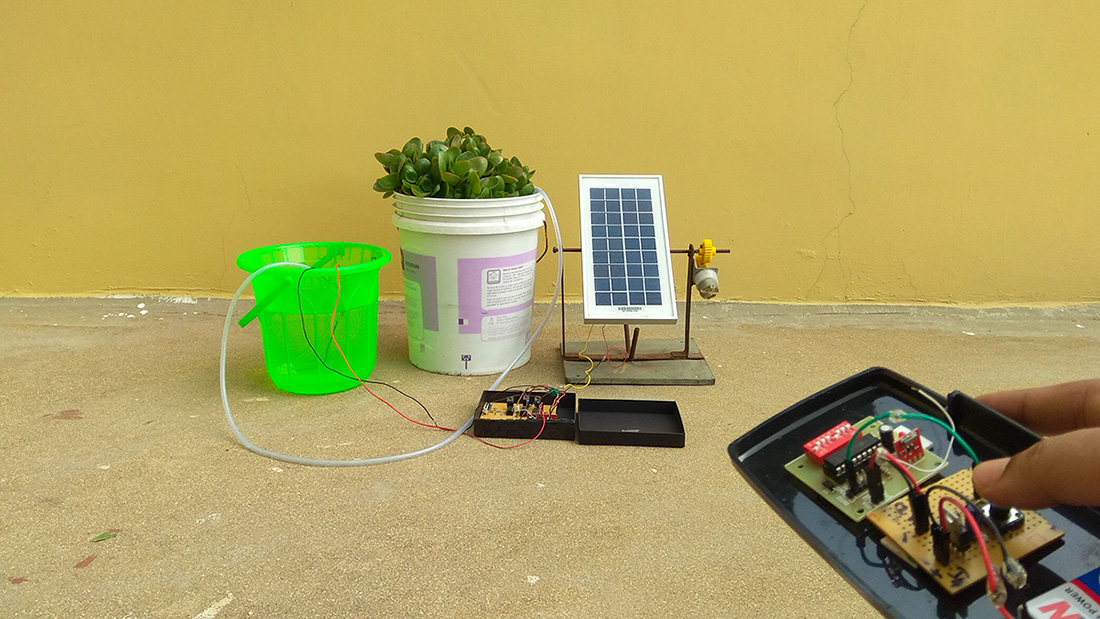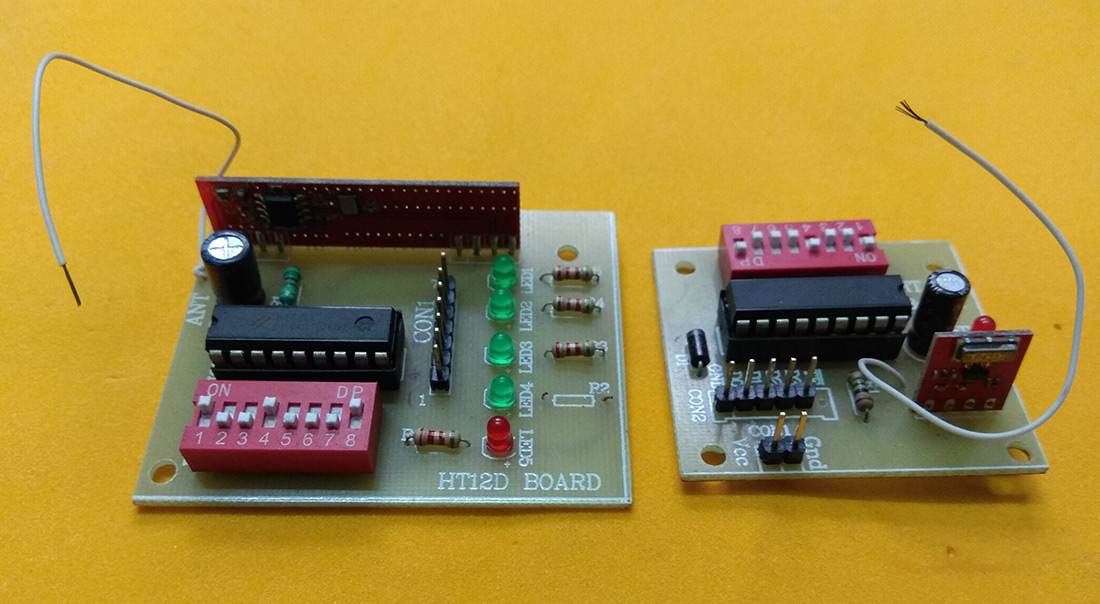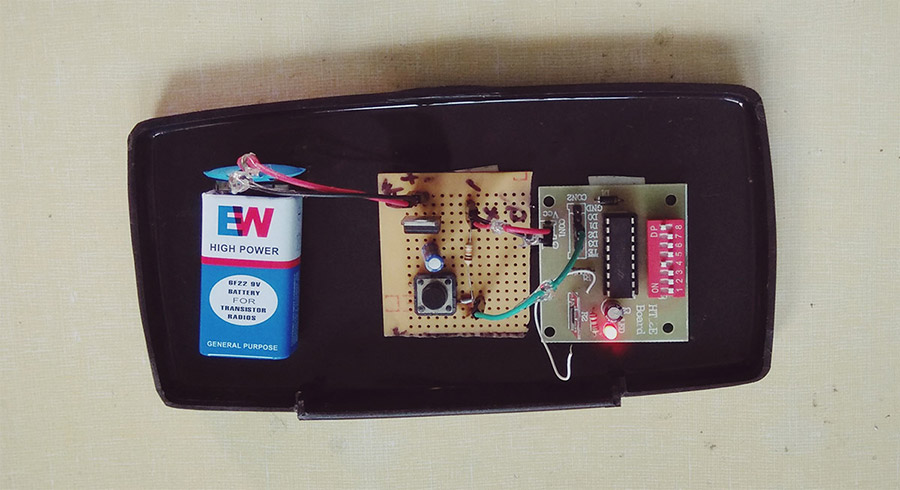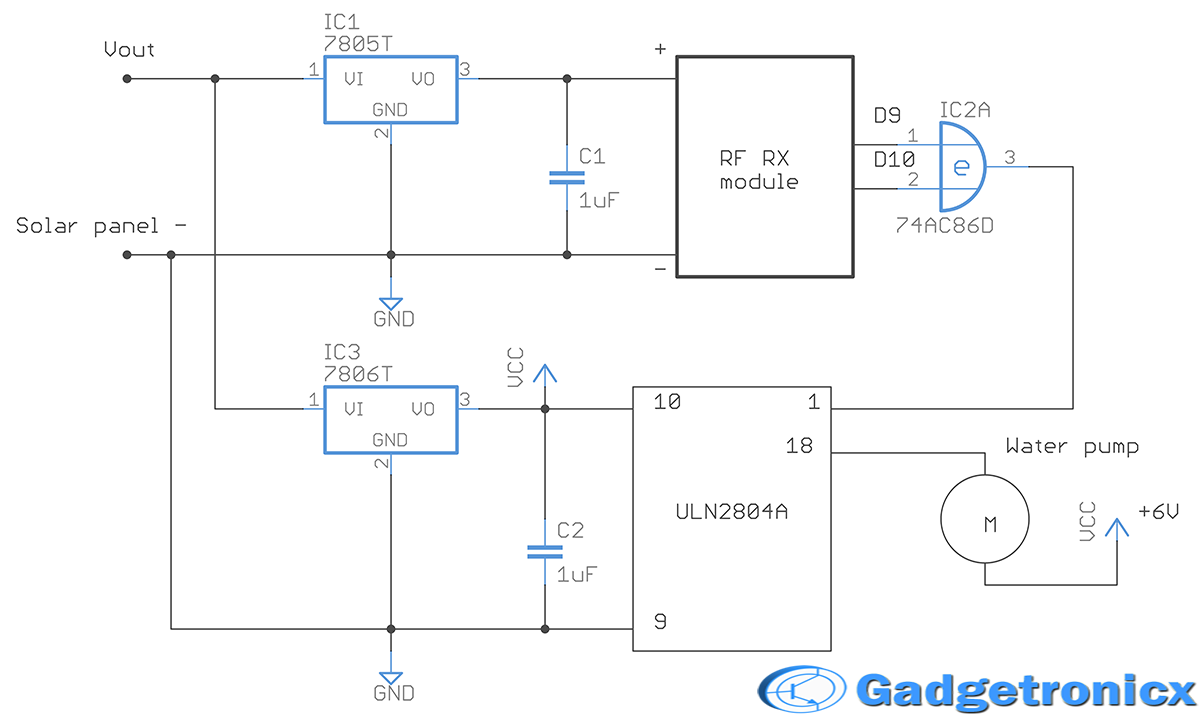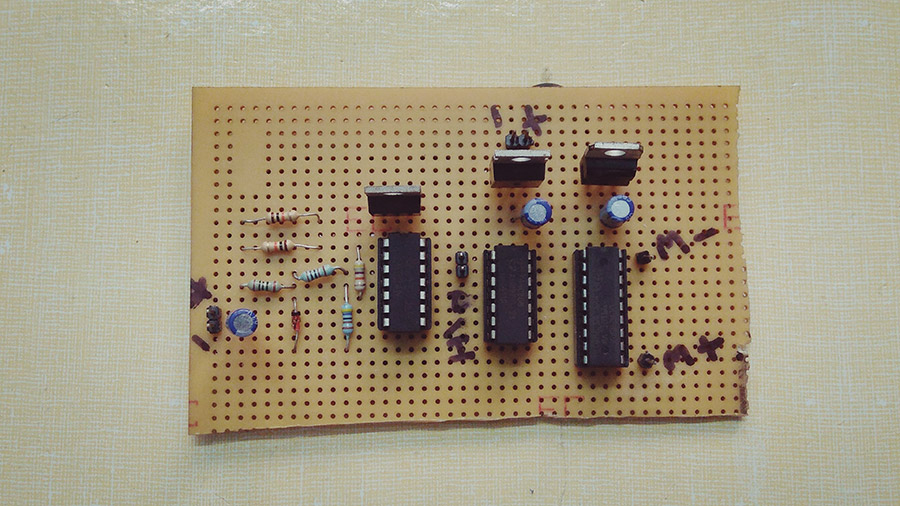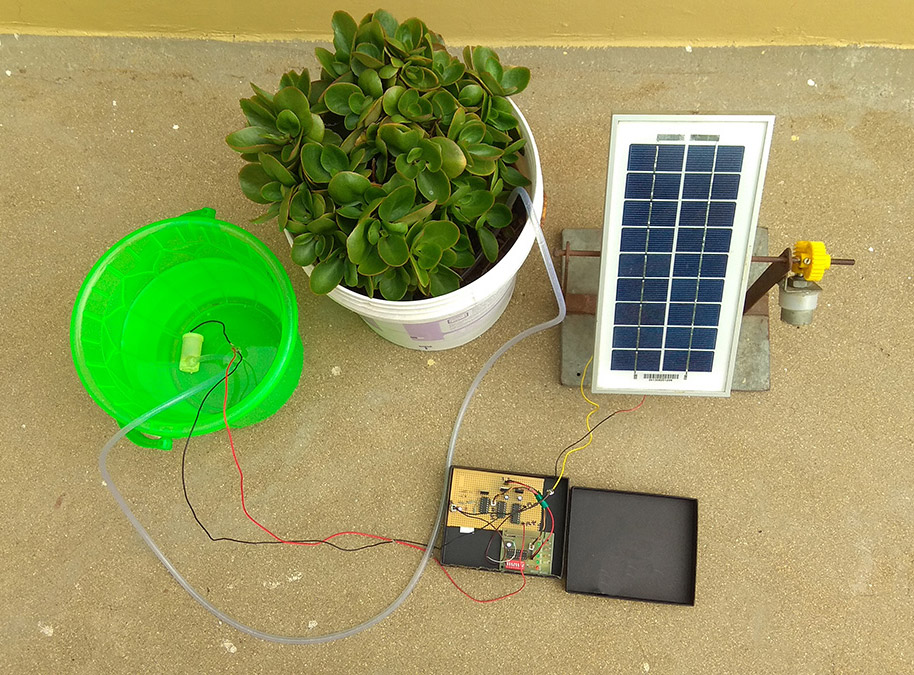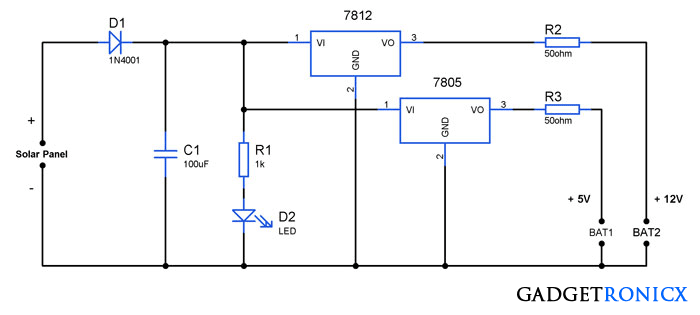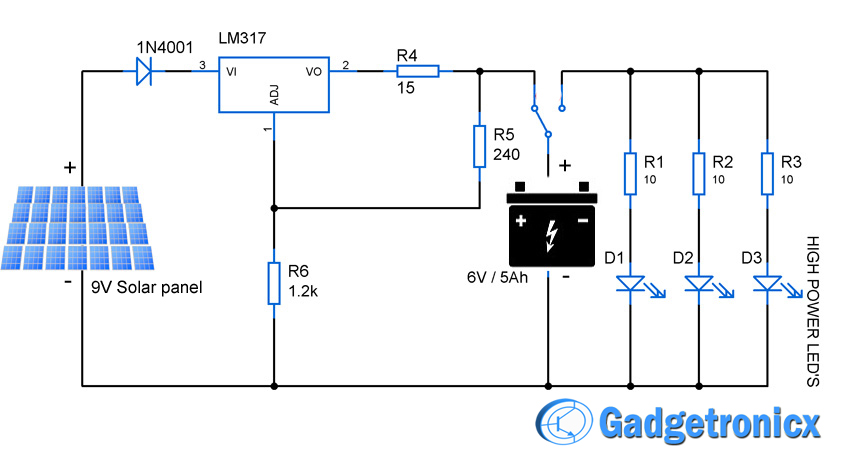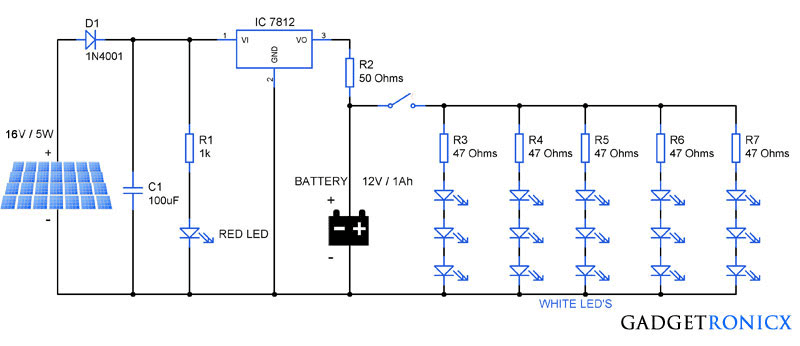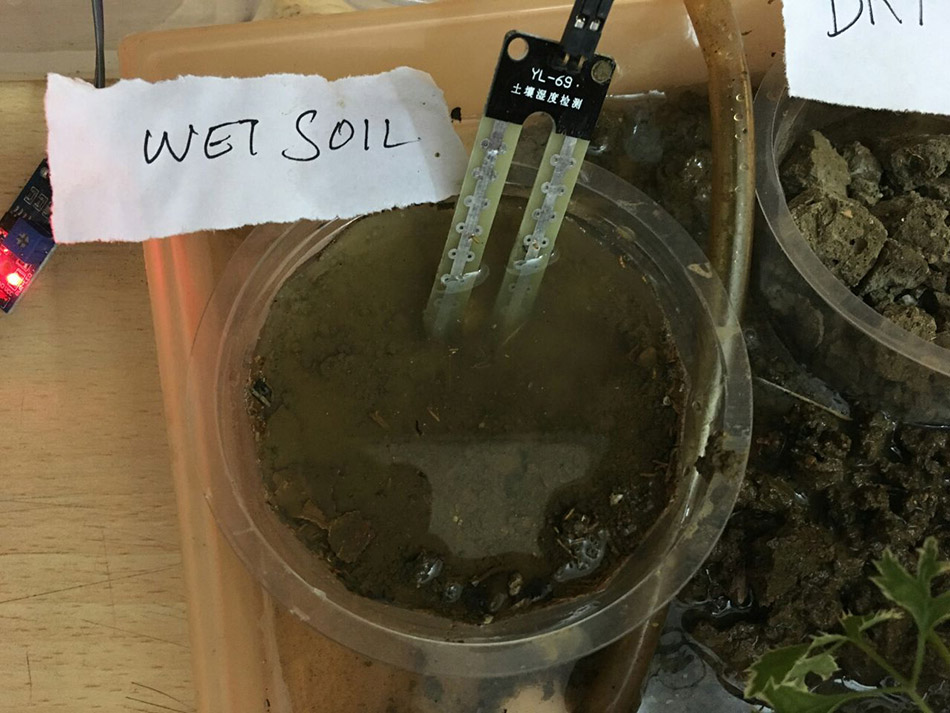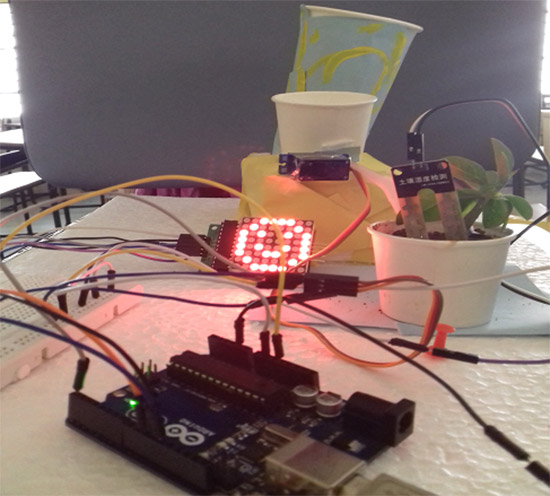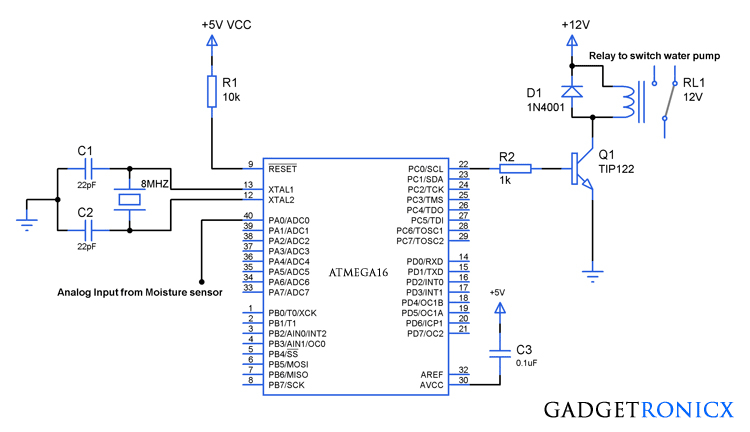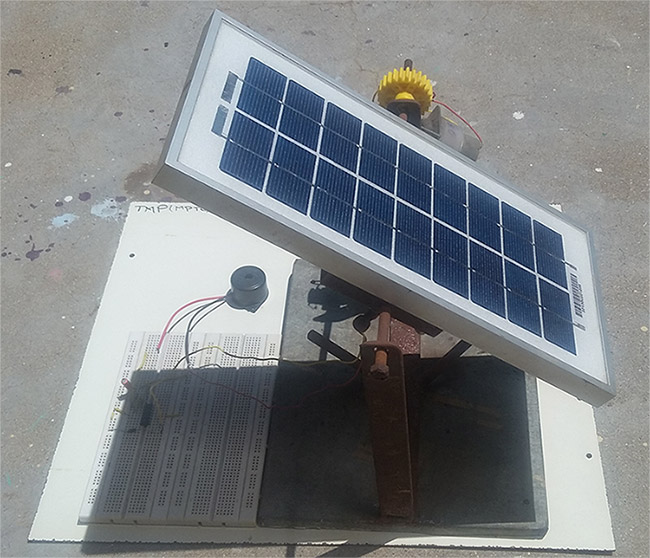Solar power has been boon to us and with raise in energy demands we could use all the help we can get. Besides watering plants has been a great time consuming task to me. Keeping that in mind I have developed this Solar powered + Remote operated watering project which uses solar energy to get powered and can be controlled by means of RF remote. Not only it uses renewable energy as a source, I can operate it from a distance of about 10 feet allowing me to water plants with great ease.
MATERIALS REQUIRED:
- 433mhz RF transmitter and Receiver – Buy here
- Solar Panel – Buy here
- Submersible motor – Buy here
- 9v Battery – Buy here
- 7805 and 7806 regulator IC
- LM324 IC
- Capacitors
- Resistors
- EX-OR Gate IC
- General PCB board – Buy here
- Connecting wires – Buy here
Buying products using above link will support our site in bringing more projects to you. Kindly consider.
BLOCK DIAGRAM OF SOLAR POWERED AND REMOTE CONTROLLED WATERING SYSTEM:
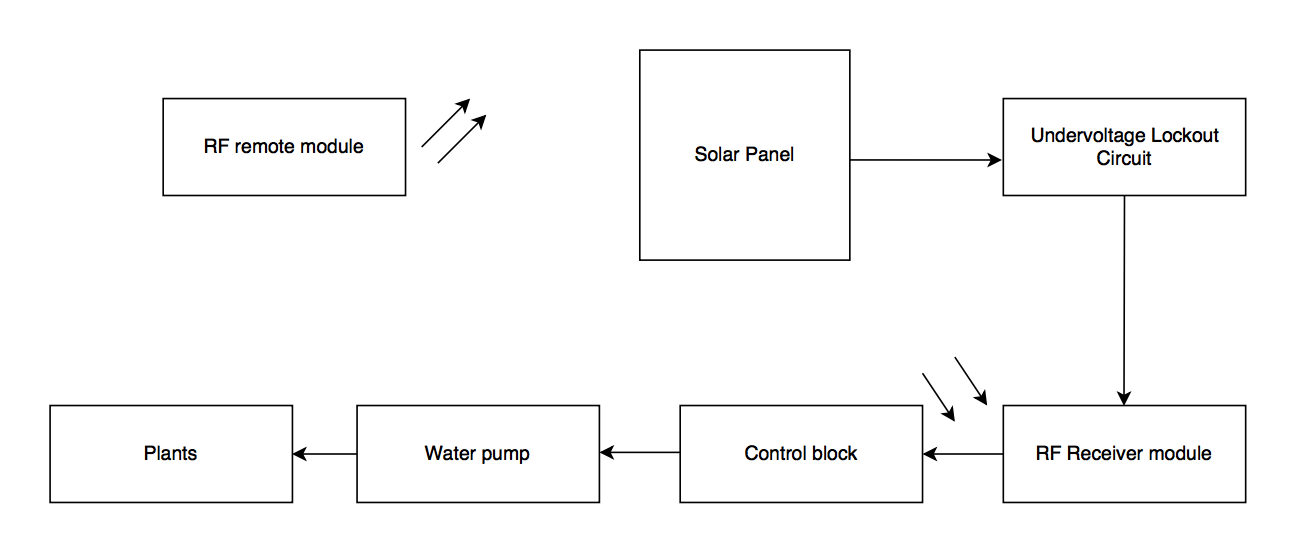
RF remote will be starting block of this project. This was made to be portable hence allows user to operate at their own ease. Next comes the Solar panel which powers the entire Receiver, Controlling unit and the motor itself and the receiving part is completely Solar powered. The choice of Solar panel is very much important.
Following the solar panel there comes an under voltage lock out circuit which effectively blocks supply to following blocks in case voltage from Solar panel falls below threshold (will be explained in detail below). The Receiver module receives and decodes the signal from transmitter. Once decoded this is fed to the controlling block where depends on the signal input motor is either activated or deactivated.
433 MHZ RF TRANSMITTER AND RECEIVER:
These two modules lies in the core of RF control operation of this project. These modules are quite easy to obtain from any local component vendor or via online. If you intend to make one or need an in depth understanding of these RX and TX modules check this article on “Building a RF remote control (kindly refer below note)“. But I would suggest you to buy one in order to make things easy. I believe it will only cost around $10 approximately.
Note: If you intend to make the module by yourself just for the sake of this Solar powered project, you can ignore the controlling section in that article since I have used a rather simple method in this project.
RF REMOTE CONTROL:
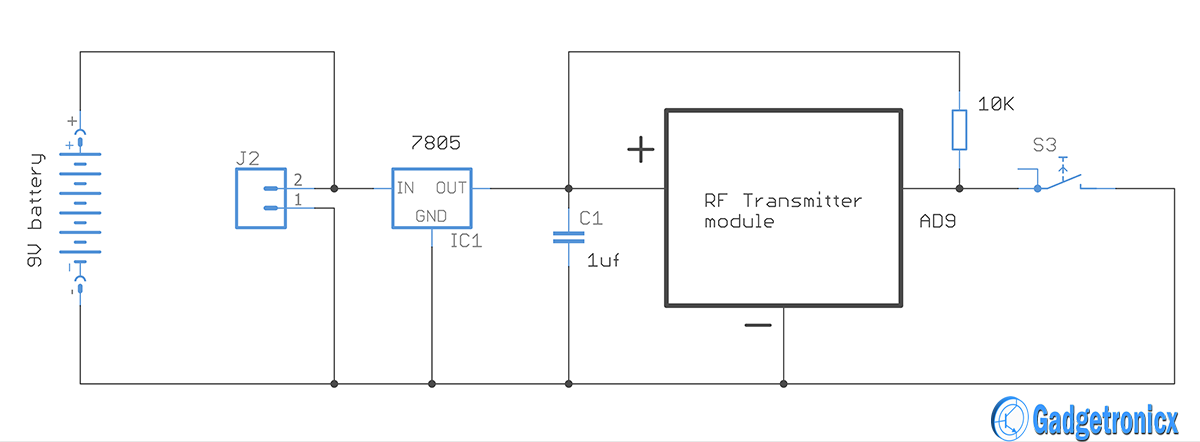
Keeping the RF transmitter module as the core we can build the remote for this project easily. To make this portable i intend to power it via battery rather and I choose a 9v battery since it is cheap and offers good lifetime. A push button was interfaced with the AD9 pin of the TX module. Other end of the button is connected to ground since pins of HT12E is active low and will be activated when pressed. A pull up resistor was used to prevent false triggering from the remote.
SOLAR PANEL & MOTOR SELECTION:
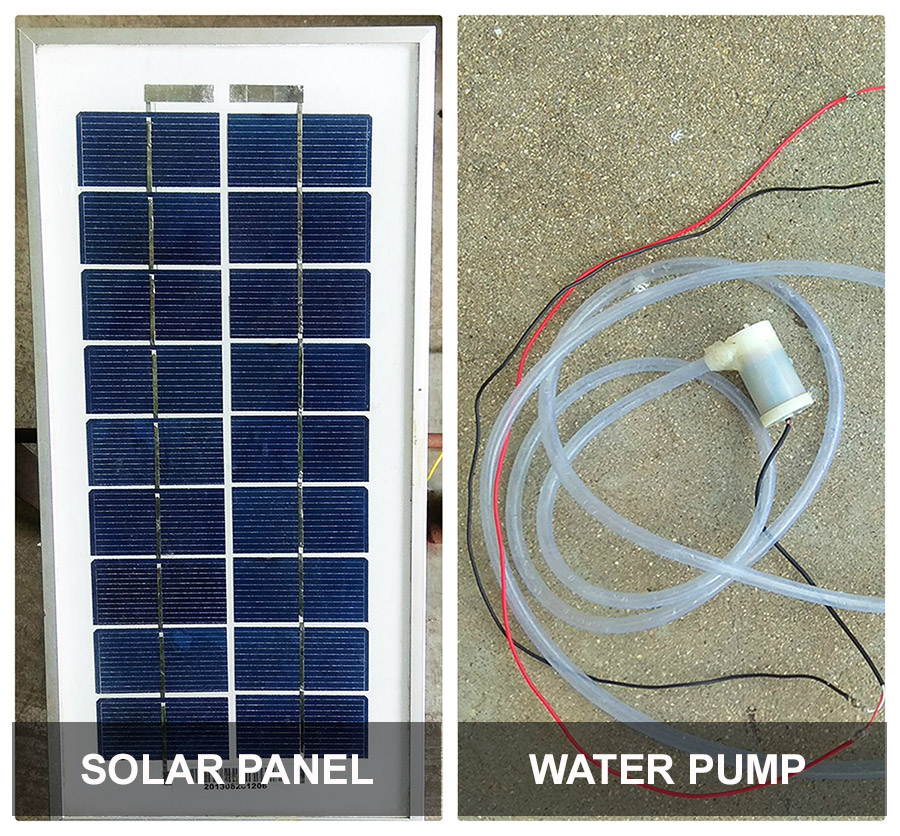
I chose 12v/5W rated solar panel for this purpose. So it will deliver 416ma of current at bright sunlight. When choosing the panel, be sure to pick one which rated about 4 or 5v more than the max voltage required to drive the project.
This is because Solar panels are not efficient and it’s very hard to obtain the rated voltage even under bright sun. When under non favourable conditions such as cloudy or shade it will even drop further. This project requires a maximum of 8v to operate so my 12v panel will do good. Keep the current rating in mind as well while selecting the panel.
The next crucial thing to do is selecting the water pump. I have chosen a 6v water pump for this purpose. I have tested the current consumption of motor under load (while pumping water), and it seems to draw 130ma of current. Increasing pressure (height of water pumping) will increase amount of current drawn. So it’s safe to assume the current drawn will be around 130ma to 150ma. Considering this my panel will be able to supply enough current for motor and other components.
UNDERVOLTAGE LOCKOUT CIRCUIT:
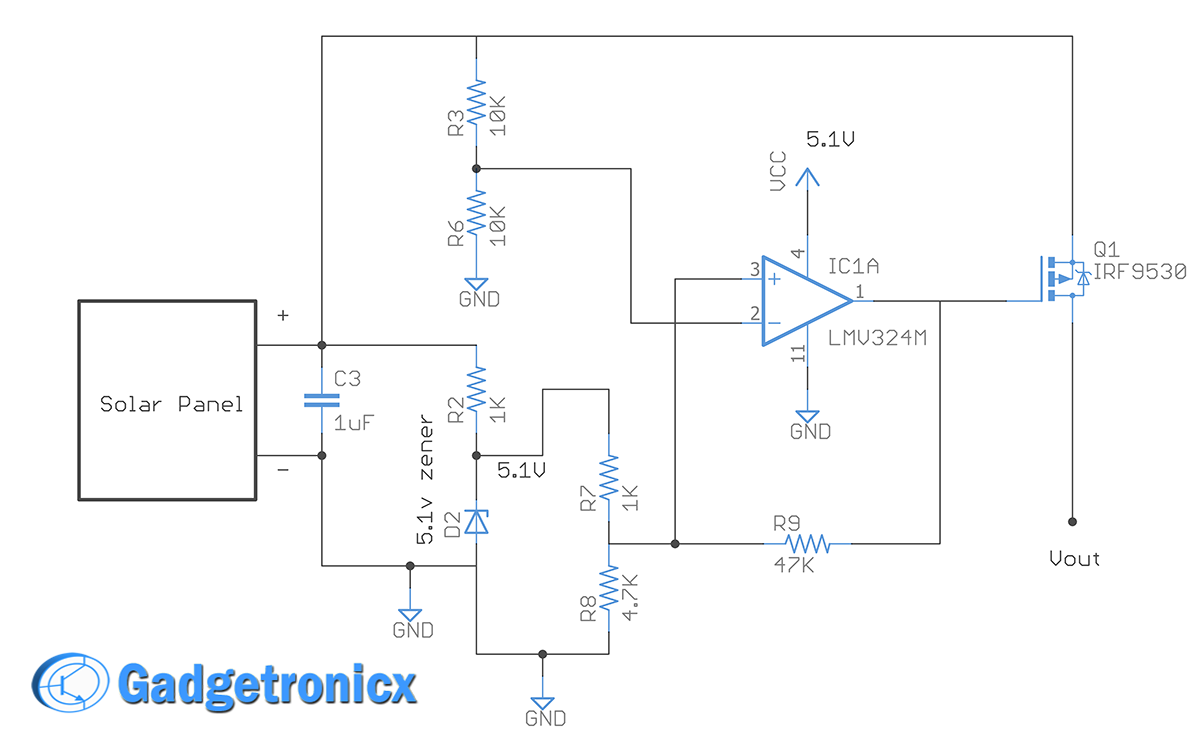
You might have seen earlier from the block diagram this block stands between the solar panel (primary power source) and rest of the blocks. This is for a purpose, as the name implies this circuit will lock out rest of the circuit blocks when voltage from solar panel falls below threshold. Being a solar powered project by adding this we can avoid unexpected turn on/off of our project because of the voltage fluctuation that tend to occur because of the solar panel.
OPERATION:
A schmitt trigger was used for this lockout purpose. It was built around Opamp LM324. But unlike the comparator it has two threshold or cutoff points that will force a change in output state. These are called as upper threshold and lower threshold voltage. Basically it is a modified comparator circuit where two signals called as Vin (input signal) and Vref (reference voltage) will be compared. Voltage from Solar panel is divided using two resistors which forms a voltage divider. The divided voltage is Vin. This is to bring down the voltage so that it can be compared with Vref.
To generate Vref a 5.1v Zener based voltage regulator was used. This will be the Vref for our lockout circuit. I want this system to get activated once the voltage from panel crosses 8v since 7806 requires a maximum of 8v to generate 6v (in which our motor will operate). This in turn makes 4v as lower threshold voltage (remember 8v divided to 4v). I have chosen the upper threshold voltage as 4.2 to produce hysteresis for schmitt trigger. This also implies that lockout circuit will turn the system only panel voltage reaches 8.4v. Read this “Schmitt trigger tutorial” for detailed explanation.
RESISTOR CALCULATION:
The resistors R7, R8 and R9 decides the upper and lower threshold voltage and it is governed by the given formula.
Upper threshold voltage = ( R789 * Vref ) / R7 + ( R789 * Vcc ) / R9 where R789 is R7 || R8 || R9
Lower threshold voltage = ( R789 * Vref ) / R7 – ( R789 * Vcc ) / R9
Substituting the values in this formula gives
R789 = 810.34 ohms
Upper threshold voltage = ( 810.34 * 5.1 ) / 1000 + ( 810.34 * 5.1 )/ 47000
= 4.21v
Similarly
Lower threshold voltage = 4.04v
So when panel voltage reaches 8.4v , Vin will be 4.2v which is the upper threshold and the output of schmitt trigger will switch to low state. This low state will drive the P-channel MOSFET in turn powers the Receiver and controlling blocks of the project. On other hand when voltage from panel drops below 8v, Vin will be below 4v which is the lower threshold and Opamp output goes high turning off the MOSFET.
RECEIVER UNIT & CONTROLLING SECTION:
Receiver unit is nothing but the receiver module built around HT12D and 433mhz receiver. Upon reception it will decode the signal from remote. AD9 data input in the HT12E will exhibit as D9 output in the receiver module. But there lies a problem HT12D is an active low pin and will be active when powered ON. This might make the receiver activate water pump when turned ON without receiving any input from remote.
To eliminate this actual data output D9 from RX module is EX-OR’d with D10 which is dummy output. When RX is turned ON by the lockout circuit both the output pins D9 and D10 remain at low state, therefore output of EX-OR gate will remain low (refer logic table). Upon data reception D9 will be low whereas D10 will go to high state. This force the EX-OR to give high output. Therefore this controlling unit plays an important role in activating and deactivating the water pump.
WATER PUMP ACTIVATOR:
This is the final stage where darlington array IC ULN2804A will power the motor. Output from EX-OR gate is fed into a channel of ULN IC and it drives the motor connected to it. And water will be pumped to plant.
SETTING UP THE WATERING SYSTEM:
It’s time to assemble the watering system
- Place the water pump in a bucket or any water reservoir but make sure it is immersed in the water.
- Extend the water outlet to the plant or plants that you want to water.
- Connect the + and – terminals to the receiver unit which lies in the black box
- Connect the Solar panel + and – terminals to the receiver unit.
That’s it, All that left now is to grab the remote and water the plants.
MAKING OF SOLAR POWERED AND REMOTE OPERATED PLANT WATERING SYSTEM:
NOTE:
- The above images are for demonstration. I would suggest you to keep the panel at the top of your house or any open space and extend the wire to the receiver unit.
- Water source could be anything suggest you to choose something big to avoid refilling them from time to time.
- I have shown a single plant since bringing multiple plant into the photo makes it looks clumsy. But you can water multiple plants, just extend the outlet pipe and add holes at appropriate places in the pipe.
- Placing the receiver unit in a insulated box is very important since exposing them to direct weather might spoil them.
IMPROVEMENT IDEAS:
- Adding battery would offer you the flexibility to water the plants even under the absence of sunlight.
- Adding multiple receiver unit at different spots while being under the remote range will offer the ability to water multiple gardening / plant spots at the same time.
- Using high rated solar panel can drive powerful pump which in turn can pump water in even more depths.
DRAWBACKS:
- As mentioned earlier this project will cease to work in the absence of sunlight.
Hope this project article will be very useful to you. I wish you guys will try this out at home and let me know how it turns out. Leave a comment below if you have any queries or feedback related to it.
I have put a great deal of time and effort in building and documenting this project. Kindly share this article via social media and support me. Thank you, Happy DIY 🙂 will see you soon with another project 🙂

